The arrival of large format tiles on the market has revolutionised the world of tiling. More and more professionals are choosing to incorporate this material into their projects. Due to its characteristics, large format tiles offer a wide range of applications. But before explaining how to tile and cut the material, we will mention some of the advantages of working with large format ceramics.

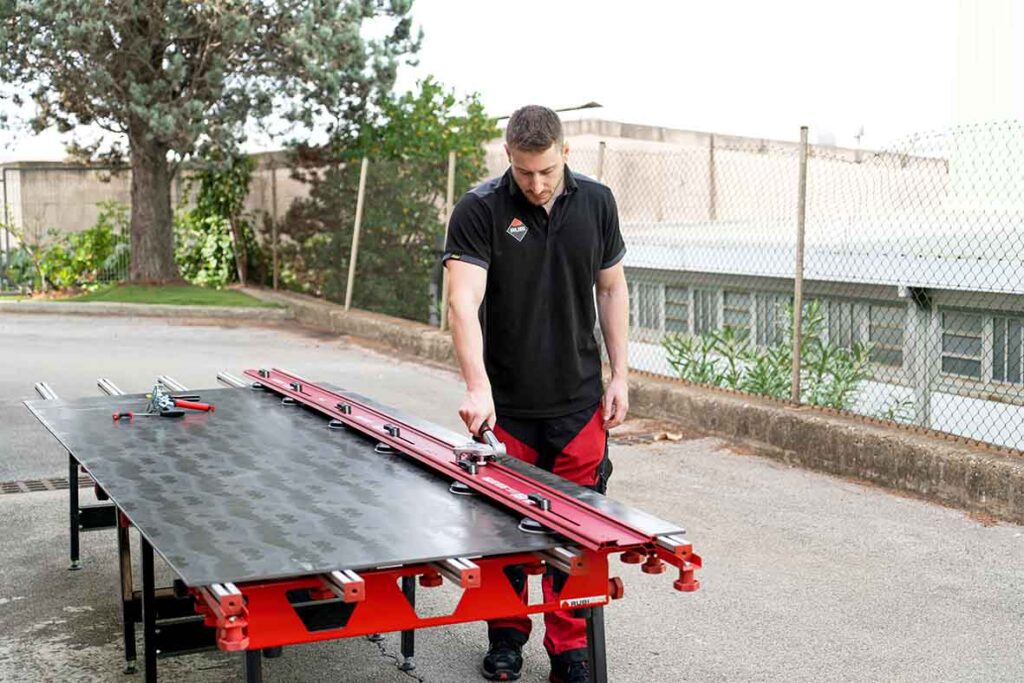
What Are The Advantages Of Large Format Tiles?
There are many advantages to using large format tiles in your work, below we list their best points and why you should consider them for your projects.
Durability Of Large Format Tiles
This is a highly durable material. Many manufacturers have worked to produce tiles that can withstand the difficulties of daily life, including intense temperature changes to the surface. Many are suitable for kitchens, so you do not need to worry about scratching the surface, or scorching your tiles with hot pans.
Continuous Design
This material allows us to use it on countertops and with different thicknesses to cover furniture. This way, we can achieve harmony and continuity of materials in our space.
Hygienic And Suitable For Kitchens
Large format ceramics are hygienic. You might ask how? Because they are large format, there are fewer grout lines in your overall work. Grout lines can harbour bacteria. Fewer grout lines means less bacteria. This means they are suitable for contact with food that we will later consume. They also have high resistance to abrasion and extreme heat and cold.
How should we cut large format ceramics?
Large format tiles are more expensive than traditional ceramics. Therefore, to break a piece of such dimensions, we must be more careful when cutting or handling it. If we do not use the correct tools, it is much more likely that the material will suffer damage.
First of all, we need to refine our way of working: we must have specific tools to make the cuts and be very careful when transporting the material from one place to another. It will be vital to work with maximum safety and with the greatest guarantees of success. But to do this, we must first decide what type of cut we are going to make.
Large Format Manual Tile Cutters
At RUBI we have a large selection of tools suitable for cutting large format tiles.
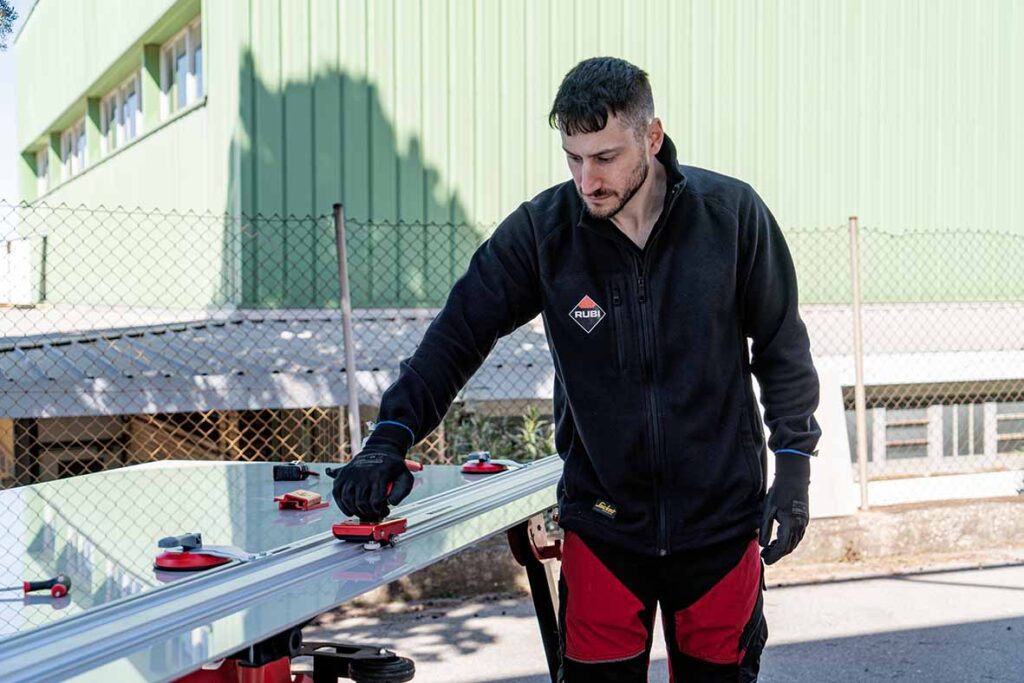
Slab Cutter G3
The Slab G3 rail system includes a scoring carriage similar to what you would expect to see on a typical manual tile cutter. This is designed to be ergonomic and intuitive to use.
The guides connect together and lock in place on the tile you are cutting. When connected, the total length is 320cm. You can increase this by adding more 110cm guides to your kit. The Slab Cutter G3 is recommended for ceramic and porcelain tiles 3 – 10mm thick.
To use this cutter, simply attach the rails to your tile using the suction cups. Make sure your scoring wheel lines up with where you want to cut. Then, simply score the tile as you would normally, and use the breaker pliers at either end of the tile (this might require two or more people) to snap the tile.

Slim Cutter G2
Similar to the previous product, the Slim Cutter G2 is also a rail system. However, instead of a scoring carriage that is akin to a regular manual tile cutter, this model features a scoring car. With this design, you are required to apply pressure to the top of the scoring car, and hold this pressure along the length of your cut.
The Slim Cutter G2 kit includes two 155cm guides, and one 65cm guide. It is ideal for ceramics and some porcelain tiles from 3 – 10mm thick.
TZ 1800
Our TZ range of manual tile cutters has been extended to feature an 1800 length model. This makes it possible to score and snap an 1800mm length tile on a traditional manual tile cutter. Our TZ 1800 also features built in support arms to make the cutting of large format tiles easier.
This product can cut ceramic, and porcelain tiles up to 21mm thick, however some porcelain tiles thicker than 15mm are not possible to cut manually. Instead, we recommend using an electric cutter to cut these thicker porcelain tiles.
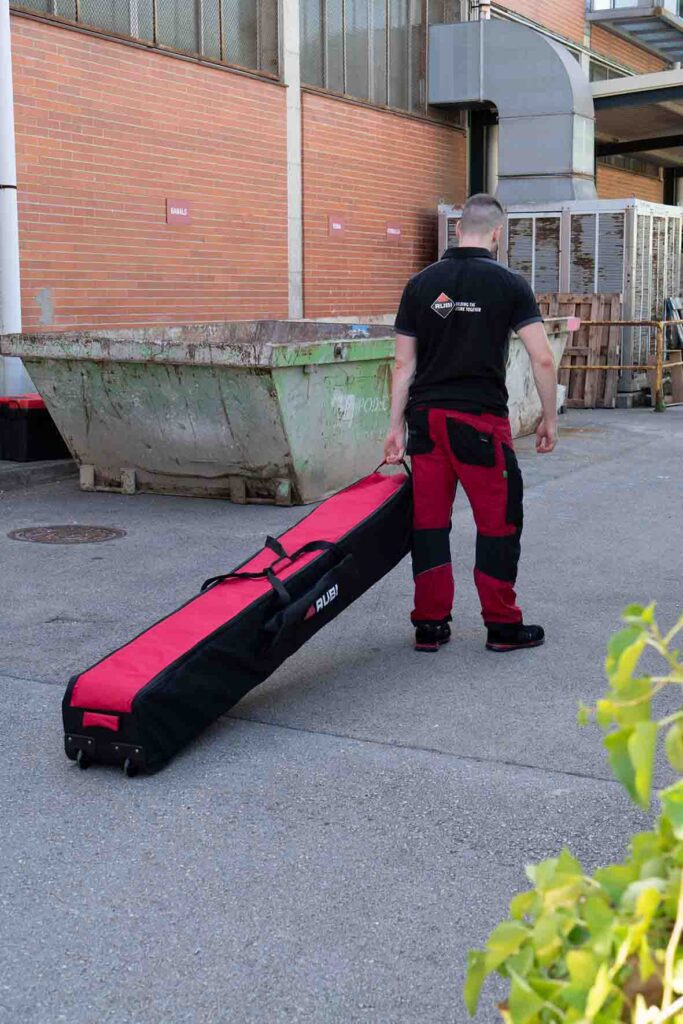
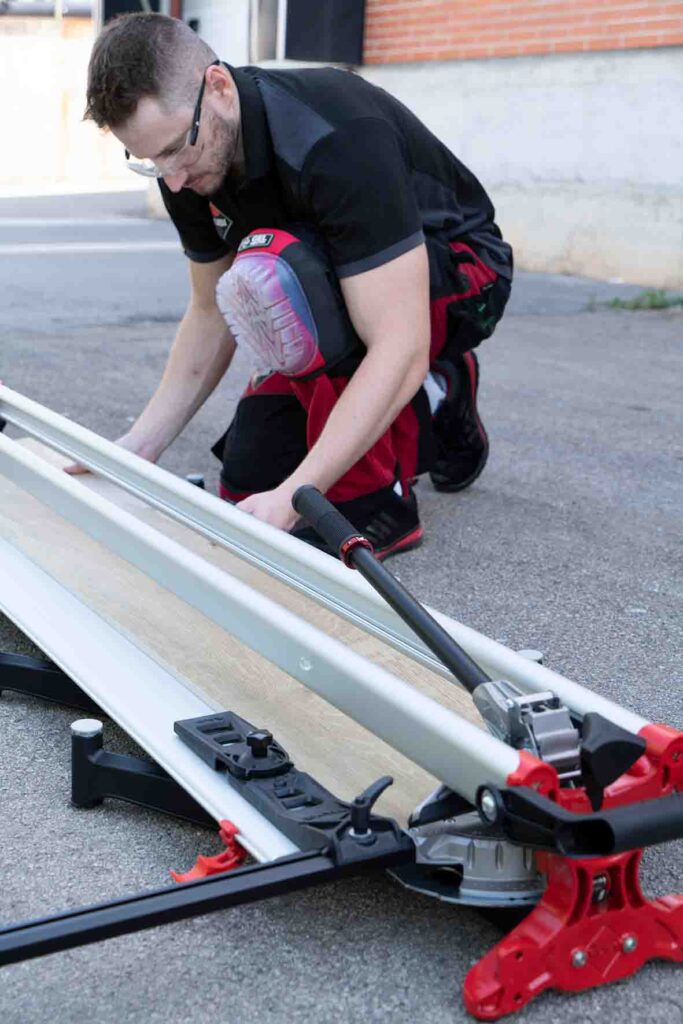
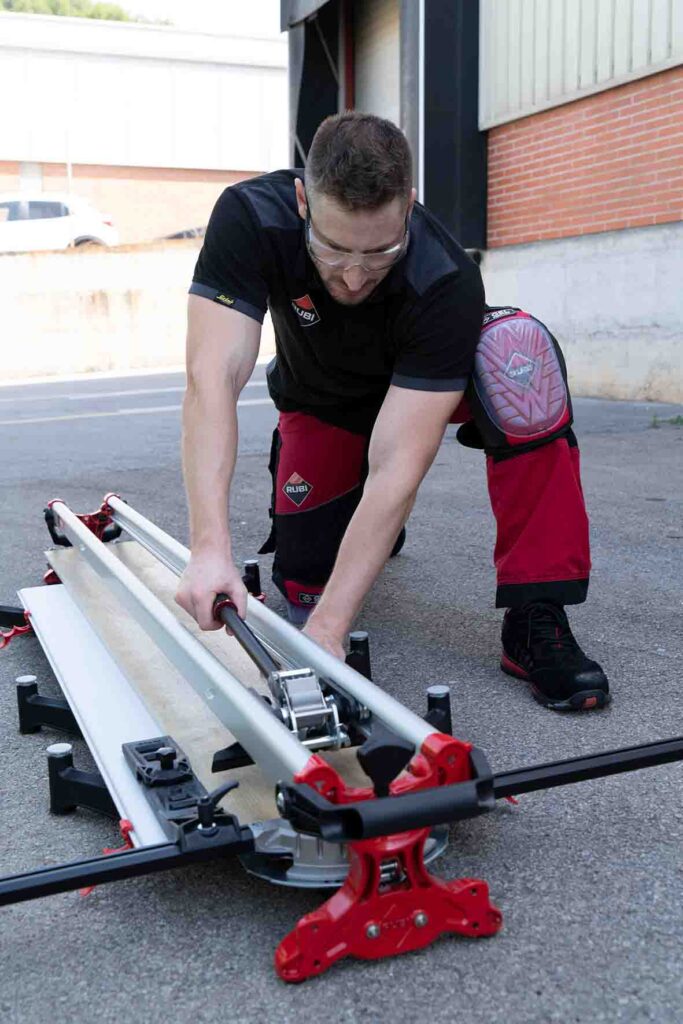
Electric cutting
When it comes to electric cutting options, at RUBI we have a vast range. For large format cutting specifically we would recommend our TC 125 G2 kit. This will have everything you need in order to cut large format tiles with ease.
TC-125 G2 circular cutter
The TC-125 G2 is a portable electric circular cutter, especially suitable for cutting large format tiles. It can also be used for ceramic and porcelain tiles, and is even suitable for natural and synthetic stone.
The circular saw is mounted on adjustable stainless steel radial bearings and has a sliding pad made of carbon steel. The TC 125 G2 slides on the same guides as the Slim Cutter G2 manual cutter. If you do not have them, you can get them in a kit or separately.
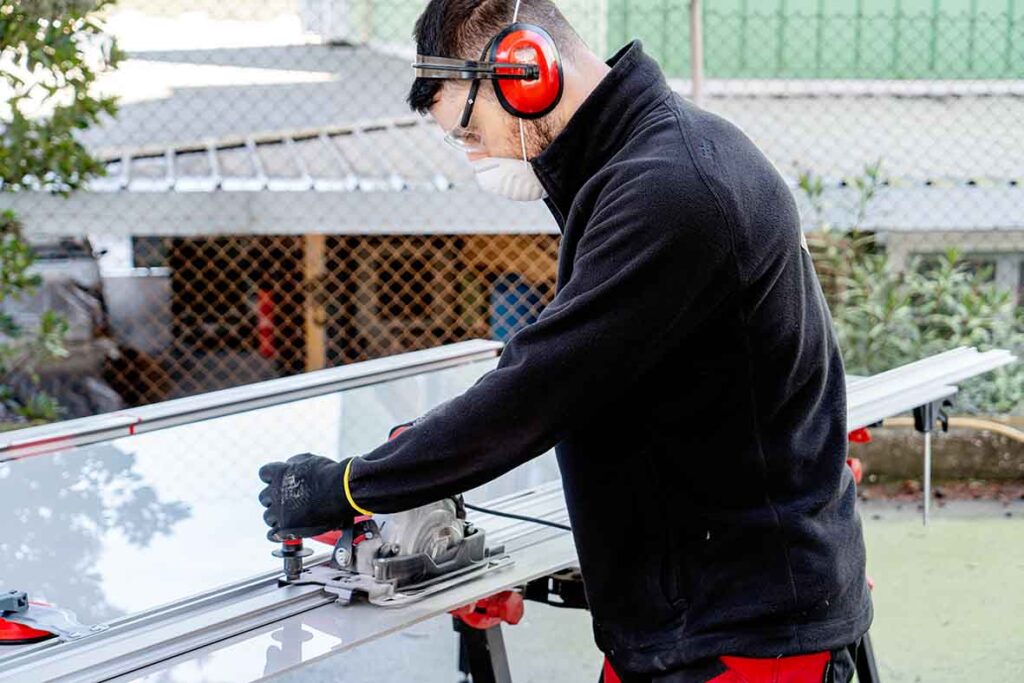
It is suitable for dry or wet cutting, thanks to its dual dust reduction/control system. The cutting head can be adjusted in height for a miter saw effect and is tiltable from 0° to 45° to make miter cuts.
This tool offers much more versatility in cutting than the manual machine, and it is also lightweight and easy to handle. We can use 115 or 125 mm blades depending on the depth we need or want to cut from our large format tiles.
Which is the best option: Manual or electric cutting?
Although manual cutting is much faster and cleaner than electric cutting, the electric cut will offer us greater precision and finish.
As we have seen, the latter gives us the possibility to work wet or dry. Whenever we can perform a wet cut, it will be better than doing it dry, as this way we inhale less construction dust, which in the long run can be harmful to our health.
If you have enjoyed this blog, remember to share it with your colleagues so they can also learn how to cut large format tiles with a manual and electric cutter.


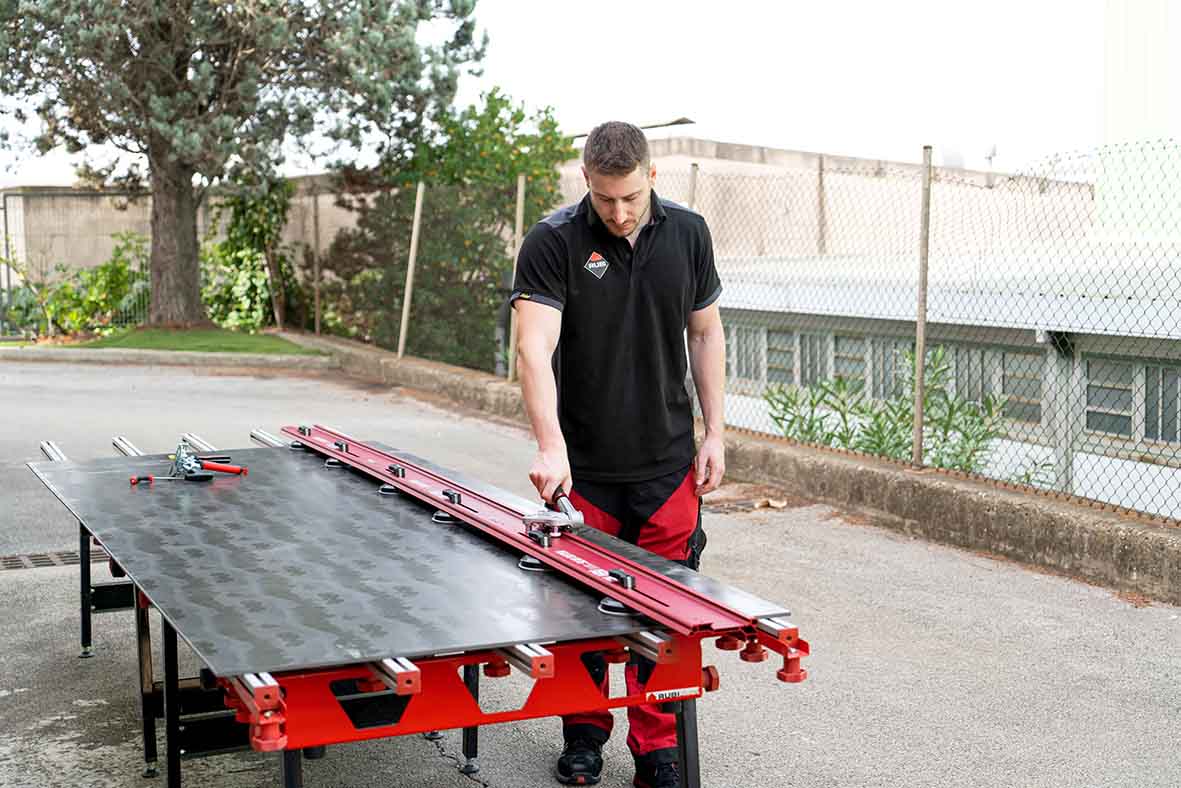
Post a comment